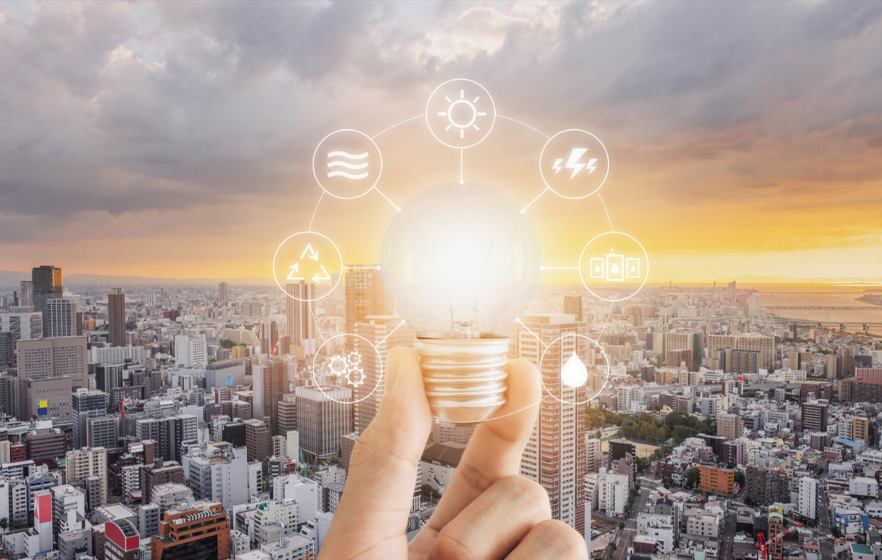
With the cost of traditional energy sources rising, more and more people are looking into solar power as a cheaper, eco-friendly alternative. And luckily, the future of solar energy looks promising. If you're interested in saving money and helping the environment, solar power could be a great option for you.
The Future of Solar Energy: Where is it Heading?
At one point, it seemed implausible that we could use the sun's energy to power our homes. But now that solar energy is more widely accepted, what's next for the industry?
Increasing Use of Solar Energy
In the past decade, solar energy uptake has exploded. According to data fromenergy.gov , in 2020, net solar energy production was 90,891 gigawatt-hours (GWh) - up from 1,121 GWh in 2010. And it's not showing any signs of slowing down - In 2021 alone, 39% of all new electricity-generating capacity added in the U.S. came from solar power .
Did you know that by 2022, 3% of the electricity in America will be generated from solar energy? That's according to the U.S. Energy Information Administration. Even more astounding, some studies suggest that wind and solar energy could meet up to 90% of the country's needs!
Solar Energy Technology Can Help Save You Money
Although solar energy conversion technology is functional, the industry is working to create a more efficient and cost-effective way of producing usable electricity.
Federal funding for solar projects has increased in recent years, with the goal of making solar technology more affordable. If successful, the cost of solar could be halved by 2030. This would make solar energy a viable option for many more households who can then reap its benefits.
More Affordable Solar Panels
The cost of solar panels is a significant deciding factor when going solar. On average, most households pay around $20,000 although costs can vary based on specific circumstances. In the past ten years, the price of solar panels has dropped significantly.
Solar Energy Industries Association (SEIA) noted that in 2010, the average cost of a residential solar system was around $40,000. However, as technology improves, SEIA believes solar panels for homeowners should become more affordable.
You Won't See a Rise in Electricity Costs
The technological advances have been progressing at a remarkable speed and, if they continue unimpeded, the U.S Office of Energy Efficiency and Renewable Energy projects that electricity prices will not rise through 2035. This is only possible if the objective of 95% decarbonization of the electric grid is reached by 2035.
A Bright Future: More Jobs In Solar Energy
With the recent increase in interest and access to solar energy, more positions have become available in the field. As of right now, over 255,000 Americans work for 10,000 companies that provide solar energy services.
The U.S. Bureau of Labor Statistics expects the solar photovoltaic installer job class to grow by 27% between 2021 and 2031. They also predict that other job classes, like administration and sales, may be added to the solar industry as more people adopt this form of green energy in their homes and businesses .
How Solar Energy Will Progress in the Future

A solar-powered future is alluring. No wonder, who wouldn't want sane energy costs from an inexhaustible renewability? Though achieving a future where we largely depend on solar won't occur in the blink of an eye. To reach that point, these things need to happen first...
Higher Tax Incentives For Homeowners, Investors And Businesses
The decreasing installation costs of solar energy is still a financial barrier for many households. With this problem in mind, the government has created tax incentives for making the switch in order to make it more accessible for everyone.
In the recent Inflation Reduction Act, many considering solar were happy to see residential energy credits for homeowners. For those installing solar panels, this will lower the overall cost. By removing a financial barrier, more homeowners who were on the fence about solar will make the switch.
Bringing Solar Technology To More People At A Lower Cost
The initial installation solar panels can be quite costly, preventing many households from taking advantage of lower electricity bills in the long run. If the industry wants to see more widespread adoption of solar energy, they need to continue improving technology so that it is more affordable for everyone.
Increasing Solar Deployment
If the industry wants to meet ambitious decarbonization goals, it will need to increase its deployment of solar energy systems. Even though more households may be interested in adopting solar, the demand might exceed the current capacity.
The U.S Office of Energy Efficiency and Renewable Energy has expressed a desire for solar deployment to significantly increase, setting a goal of 30 GWs deployed per year.
Improve Storage And Transmission
While it's impressive that we can turn the sun's energy into electricity, there are still more steps involved in making this usable for consumers. The industry is working on improving storage options and increasing transmission efficiency so that solar energy can be used more widely.
Continuing To Develop New Solar Technology
While solar technology is widely useful, we must continue to researching improvements for the long term future of solar energy use. This not only includes improving how solar panels work, but also increasing their viable lifespan so that they don't end up in landfills after a short amount of time.
Conclusion
As you can see, there are many things that the solar industry needs to do in order to increase its deployment of solar energy systems and bring down costs. This is an ambitious goal, but with the decreasing cost of solar panels and increasing interest in renewable energy, it's definitely possible. What do you think is the most important step for the solar industry to take in order to reach a more sustainable future?

